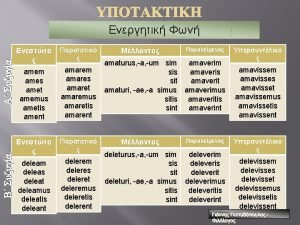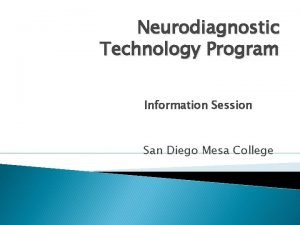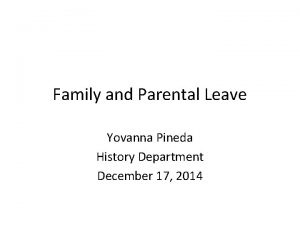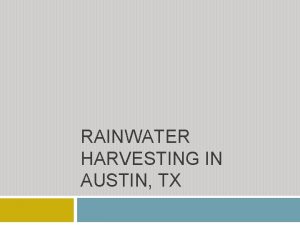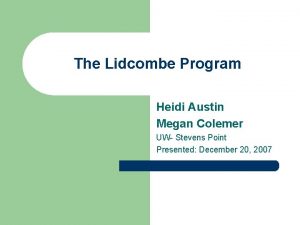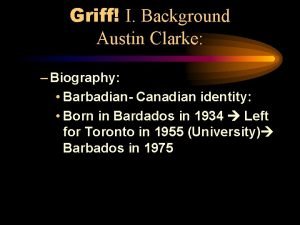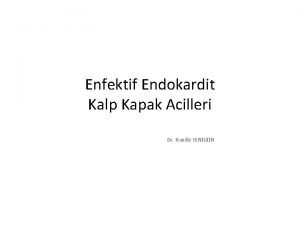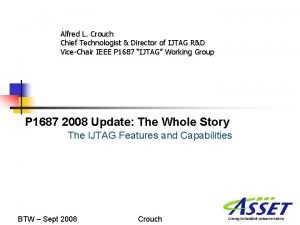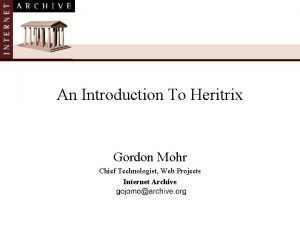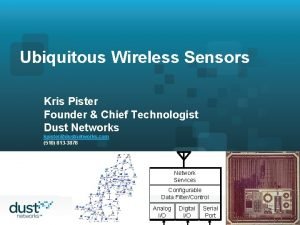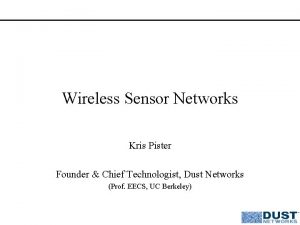Alfred L Crouch ASSET Austin TX Chief Technologist



























- Slides: 27

Alfred L. Crouch ASSET, Austin, TX Chief Technologist & Director of IJTAG R&D Vice-Chair IEEE P 1687 “IJTAG” Working Group Member IEEE 3 D Study Group acrouch@asset-intertech. com 3 D Test What is 3 D Test and Why is it Different?

Day One of the Study Group… 1. Saman Adham 2. Lorena Anghel 3. Patrick Y Au 4. Paolo Bernardi 5. Sandeep Bhatia 6. Vivek Chickermane 7. Eric Cormack 8. Adam Cron 9. Al Crouch 10. Shinichi Domae 11. Ted Eaton 12. Bill Eklow 13. Jan Olaf Gaudestad 14. Michelangelo Grosso 15. Said Hamdioui 16. Michael Higgins 17. Gert Jervan 18. Hongshin Jun 19. Rohit Kapur 20. Santosh J Kulkarni 21. Philippe Lebourg 22. Stephane Lecomte 23. Hans Manhaeve 24. Erik Jan Marinissen 25. Teresa Mc. Laurin 26. Ken Parker 27. Herb Reiter 28. Mike Ricchetti 29. Andrew Richardson 30. Daniel Rishavy 31. Jochen Rivoir 32. Volker Schober 33. Eric Strid 34. Thomas Thaerigen 35. Ioannis Vovlatzis 36. Min-Jer Wang 37. Lee Whetsel BTW 2010

The 3 D Study Group Goal Ø To investigate whether an IEEE Standard is needed to cover 3 D chips Ø – and to generate a PAR if the answer is yes… …not everyone on the committee understands this and some are trying to solve the problem… 5. 2 Scope of Proposed Standard: The proposed standard is a ‘die-centric’ standard; it applies to a die that is pre-destined to be part of a multidie stack and such a die can be compliant (or not compliant) to the standard. The proposed standard defines die-level features, that, when compliant dies are brought together in a stack, comprise a stack-level architecture that enables transportation of control and data signals for the test of (1) intra -die circuitry and (2) inter-die interconnects in both (a) pre-stacking and (b) post-stacking situations, the latter for both partial and complete stacks, in both pre-packaging and post-packaging situations. The primary focus of inter-die interconnect technologies addressed by this standard is Through. Silicon Vias (TSVs); however, this does not preclude its use with other interconnect technologies such as wire-bonding. The standard will consist of two related items. 1. 3 D Test Wrapper On-die hardware features that enable transportation of test (control and data) signals in the following configurations. • Pre-stacking: From on-die I/Os to die-internal Df. T features, and vice versa. • Post-stacking • ‘Turn’ mode: From on-die I/Os to die-internal Df. T features, and vice versa. These on-die I/Os might be external I/Os and/or inter-die interconnections coming from (or going to) an adjacent die. • ‘Elevator’ mode: From on-die I/Os, through THIS DIE, to the inter-die interconnections to an adjacent die, and vice versa. These on-die I/Os might be external I/Os and/or inter-die interconnections coming from (or going to) another adjacent die. 2. Description A description of the Test Wrapper features in a standardized human- and computer-readable language. This description should allow the usage of the die within a multi-die stack for test and test access purposes. BTW 2010

What does this mean? Ø Human POV: We want to treat individual die like “Lego Blocks” • The Board-to-Chip is the Big Green thing • The Chip-to-Chip are the bumps and holes Ø The PAR is to create the Working Group to investigate: • the JTAG-like connection to the Big Green thing… n Is it 1149. 1, is it 1149. 7, is it other? Do we stipulate this, or assume it • …and to define the per-die connection for test/debug on each die n Physical Vias/Locations, Pin/Signal Protocol, Number of, etc. • …and the support and interaction for existing and proposed IEEE Standards such as 1149. 1, 1149. 6, 1500, P 1687 n Incorporate the existing, create and add the new BTW 2010

What’s the Problem - in Words? Ø Ø Bare “first-floor” die must be tested and must become a KGD • • Must be able to be manufactured, tested and delivered before stacking or final packaging Must be able to be stacked (W-on-W, D-on-D, D-on-W) Must be able to be tested after stacking – partial, total, final May need to be tested-debugged after packaging (IC failure-analysis, board test, system test, field returns) Bare “upper-story” die must be tested and must become a KGD • Must be able to be manufactured, tested and delivered before stacking or final packaging n • • • Ø Must support Probe Pads Must be able to be stacked (W-on-W, D-on-D, D-on-W) Must be able to be tested after stacking – partial, total, final May need to be tested-debugged after packaging (IC failure-analysis, board test, system test, field returns) Whole Stack may have requirements different than single IC or planar-MCM • • • There may be new defect/fault models such as thermal hot spots or die-to-die noise interference There may be a need to test individual die or to access items on individual die without involving other die or other items (test/debug in isolation) There may be die-to-die tests such as interconnect or unit-to-unit operations BTW 2010

Distribution of IEEE Standard Solution Spaces Chip-Level 1149. 7 IF Explanation: 4 Standards exist to access “inside the chip” logic called Cores and Instruments Each Standard has a purpose and an application section. The 1149. 7 section concerns access to many TAPs through packets of data and control and maybe a reduced pin interface. The dot-7 may be at the board and/or on the chip. 1149. 1 IF Explanation: If there is no 1149. 7, then there may be a chip-level 1149. 1 TAP and TAPC; TAPC. 7 Described by HSDL/BSDL SGB (TDR) Explanation: The TAPC should connect to a Standard IF using 1 or there may be more than Instruction – further one TAP and TAPC; or actions are all Scan. DRs there may be one TAP but multiple TAPCs using 1687 can be an Compliance Enable pins embedded TDR or can be to select the active TAPC. an optional hierarchical connection TDR TAP. 1 TAP. 7 1687 IF TAP. 1 Multiple TAPCs Alt TAPC BScan TAPC Described by BSDL 1687 TDR Instrument Dynamic Scan Chains SIB Described by ICL/PDL 1500 IF 1500+ Instrument WIR WBR CDR SIB 1687 TDR Instrument Explanation: 1500 has TDRs arranged in parallel and requires a Mux Select in addition to an 1149. 1 interface – made for Embedded Core access Described by CTL 5

Distribution of IEEE Standard Solution Spaces Chip-Level 1149. 7 IF 1149. 1 IF 1687 IF SGB (TDR) 1500 IF 1500+ Instrument WIR WBR CDR SIB 1687 TDR Instrument TAP. 1 TAP. 7 TAPC. 7 Described by HSDL/BSDL Multiple TAPCs TAP. 1 Alt TAPC TAP. 1 BScan TAPC Described by BSDL 1687 TDR Instrument SIB Described by ICL/PDL Described by CTL …by ICL/PDL 6

1687 Scan & Debug 1500 Wrapper Mem Core 1687 MBIST 1500 Wrapper 1149. 1 TAP & Ctrl Test TSV 1149. 1 TAP & Ctrl CPU Core 1149. 7 Interface What’s the Problem – in Pictures? TCK TMS TDI TDO ASIC Logic Temp. Mon Scan 1500 Wrapper 1149. 1 TAP & Ctrl DSP Core 1687 Scan & Debug LBIST 1500 Wrapper Other Wrapper 1149. 1 Logic FLASH Core Bottom or Base Die can be Tested to become a (KGD) Known-Good-Die • Want high coverage • No Test Escapes Must have Probe Pads Must have a TAP • TAP-1 or TAP-7 • 1149. 1 B-Scan for I/O • must have access to: • Core Test • Embedded Debug • must have TSVs to: • access upper die 1687 MBIST Other Wrapper? High Speed IO Boundary Scan

What’s the Problem – in Pictures? 1500 Wrapper 1149. 1 TAP & Ctrl 1149. 7 Interface TCKC TMSC 1149. 1 TAP & Ctrl 1687 Scan & Debug 1149. 7 Interface CPU Core 1149. 1 TAP & Ctrl Each “Upper” Die must have: • Known-Good-Die Test • Stack Test Mem Core 1687 MBIST 1500 Wrapper ASIC Core Temp. Mon 1687 Scan 1500 Wrapper DSP Core 1687 Scan & Debug LBIST 1500 Wrapper 1149/1500 BSR/WBR 1149. 1 TAP & Ctrl 1149. 7 Logic 1149. 7 Interface FLASH Core 1687 MBIST 1500 Wrapper Must have a few Probe Pads for bare-die test or partial stack test May use 1500 WBR or 1149. 1 BSR for Interconnect Test Prefer P 1687 SIB for management of Scan Path lengths and Instrument Scheduling Dot-7 I/O on each Die has 2 TSVs to feed Stacked-Die • TMSC • TCKC

Some Various Access Proposals Ø The “ 1149. 7 Multiple-TAP Access” Proposal Ø The “ 1149. 1 TAP on Base-Die Only” Proposal Ø The “ 1149. 1 Prime TAP on each Die” Proposal Ø The “ 1149. 7 to Prime TAP on each Die” Proposal

The 1149. 7 Multiple TAP Proposal Ø There is an 1149. 7 TAP on the Base Die which becomes a twowire distribution network to all the TAPs one each die Ø There are two-TSVs on each die to deliver these signals (threesignals and three-TSVs if a Mux is used instead of a bidirectional TDI-TDO function) Ø There are 1149. 1 TAPs associated with groups of logic or cores – and there is an 1149. 7 Controller in front of each 1149. 1 TAP Ø This method places more logic on each die (multiple dot-1 and dot-7 TAPs, multiple core-wrappers), but makes each addressable item a self-contained and locally controlled unit with 1149. 7 only being a data/control delivery conduit – not a controller source for configuration or instructions.

An Access Solution: “ 1149. 7 Multiple-TAP Access” 1687 Scan & Debug 1500 Wrapper 1149. 1 TAP & Ctrl CPU Core 1149. 7 Interface Bottom Die Known-Good-Die Mem Core 1687 MBIST 1500 Wrapper TCKC TMSC 1149. 1 TAP & Ctrl 1149. 7 Interface 1149. 1 TAP & Ctrl ASIC Core Temp. Mon 1687 Scan 1500 Wrapper 1149. 1 TAP & Ctrl DSP Core 1687 Scan & Debug LBIST 1500 Wrapper 1149. 1 TAP & Ctrl 1149. 1 Logic 1149. 7 Interface 1149. 7 Logic Must have Probe Pads Must have a TAP • TAP-1 or TAP-7 • Speed to Instrument 1149. 1 Boundary Scan for I/O FLASH Core 1687 MBIST 1500 Wrapper Dot-7 has two TSVs to feed Stacked-Die • TMSC • TCKC My Preference - More on-chip Logic - but Self-Contained and Scalable

An Access Solution: “ 1149. 7 Multiple-TAP Access” 1500 Wrapper 1149. 1 TAP & Ctrl 1149. 7 Interface TCKC TMSC 1149. 1 TAP & Ctrl 1687 Scan & Debug 1149. 7 Interface CPU Core 1149. 1 TAP & Ctrl Die 2 -up-to-Die N • Known-Good-Die Test • Stack Test Mem Core 1687 MBIST 1500 Wrapper ASIC Core Temp. Mon 1687 Scan 1500 Wrapper 1687 Scan & Debug LBIST 1500 Wrapper 1149/1500 BSR/WBR 1149. 1 TAP & Ctrl DSP Core 1149. 7 Logic 1149. 7 Interface 1149. 1 TAP & Ctrl FLASH Core 1687 MBIST 1500 Wrapper Must have a few Probe Pads (Mux or SIB) for KGD May use 1500 WBR or 1149. 1 BSR for Interconnect Test Prefer P 1687 SIB for management of Scan Path lengths and Instrument Scheduling Dot-7 I/O on each Die has 2 TSVs to feed Stacked-Die • TMSC • TCKC Issue: each grouping adds a TAP and a Wrapper (Logic) Note: many die already have multiple TAPs and could extend easily

1500 Wrapper 1149. 7 Interface ASIC Core Temp. Mon TCKC 1687 Scan TMSC 1149. 1 TAP & Ctrl TMSC 1500 Wrapper LBIST 1500 Wrapper 1149. 1 TAP & Ctrl FLASH Core DSP Core 1687 Scan & Debug MBIST 1500 Wrapper 1687 Scan & Debug 1500 Wrapper ASIC Core Temp. Mon 1687 Scan 1149/1500 BSR/WBR LBIST 1500 Wrapper There are 2 physical Vias The connection is broadcast-Star There is more logic to define address and extract packet data There are probe pads on upper die There is a 1500 or 1149. 1 type boundary scan for TSVs between die BTW 2010 Stacked Die with only Vias 1149. 7 Logic 1149. 1 TAP & Ctrl DSP Core 1149. 7 Interface 1149. 1 TAP & Ctrl 1149. 1 Logic 1687 MBIST 1500 Wrapper Base Die with Pins 1149. 7 Interface 1149. 7 Logic Mem Core 1149. 1 TAP & Ctrl 1149. 7 Interface TCKC 1149. 7 Interface 1500 Wrapper 1149. 1 TAP & Ctrl Scan & Debug 1687 MBIST 1149. 7 Interface 1500 Wrapper CPU Core Mem Core 1687 Scan & Debug 1149. 7 Interface CPU Core 1149. 1 TAP & Ctrl An Access Solution: “ 1149. 7 Multiple-TAP Access” FLASH Core 1687 MBIST 1500 Wrapper

The 1149. 1 TAP on Base-Die Only Proposal Ø There is one 1149. 1 TAP on the Base Die which becomes a controller for all die in the stack – it provides the control signals for all JTAG-compliant object in the entire die stack Ø There are up to seven-TSVs on each die to deliver these signals control and data signals • • Shift. En Capture. En Update. En TCK TDI TDO (single TDO requires a Multiplexor and a Select on each die) Reset. N (opt) Ø There are 1500 Wrappers/1687 Registers associated with groups of logic or cores – and they use these 1149. 1 signals to coordinate all operations Ø This method places the entire brunt of signal loading and instruction delivery on the single TAP Controller on the Base-Die – even if the die and number of die to eventually be placed above the base-die are unknown at the time of design; there is also a TDO management issue if only one TDO-TSV is used

An Access Solution: “ 1149. 1 TAP on Base-Die Only” 1500 Wrapper Scan & Debug 1687 MBIST 1500 Wrapper S C Mem Core 1687 Scan & Debug CPU Core Mem Core SIB CPU Core SIB ASIC Core 1687 MBIST 1500 Wrapper ASIC Logic U Temp. Mon 1687 Scan SIB 1149. 1 Tck Logic Tdi 1500 Wrapper Tdo Temp. Mon 1687 Scan 1500 Wrapper R SIB LBIST 1500 Wrapper 1687 Scan & Debug MBIST 1687 Scan & Debug DSP Core FLASH Core 1687 LBIST 1500 Wrapper FLASH Core SIB DSP Core MBIST 1500 Wrapper There are 7 physical Vias – issue, unknown loading on base die instruction-register The connection is serial-daisy-chain with SIB for turn-around There is more routing to create access and control The 1687 SIB or a 1500 Mux structure can be used for bypass and turn-around There are probe pads on upper die There is a 1500 or 1149. 1 type boundary scan for TSVs between die BTW 2010

The Segment-Insertion-Bit (SIB) The Key Element for Adding, Organizing, Managing Embedded Content TDO Shift-Update Cell used as a SIB from. Scan. Out to. Scan. In TDI SC U 0 TCK Scan Path Management Bit Select The HIP Normal TDI-TDO Scan Path Default Configuration from Reset

The Segment-Insertion-Bit (SIB) The Key Element for Adding, Organizing, Managing Embedded Content TDO Shift-Update Cell used as a SIB from. Scan. Out to. Scan. In TDI SC U 1 TCK Scan Path Management Bit Select The HIP Added Network Scan Path Can access other SIBs or Instrument Interface TDR

The Network-Instruction-Bit (NIB) The Key Element for Local Configuration of Scan Path Networks Shift-Update Cell used as a NIB TDI Can access other SIBs or Instrument Interface TDRs TDO SC U 1 Network Command TCK Scan Path Network Command Bit

An Access Solution: “ 1149. 1 TAP on Base-Die Only” Issue – unknown loading on instructions/signals CPU Core 1687 SIB Scan & Debug 1500 Wrapper SIB 1149. 1 Logic MBIST 1500 Wrapper ASIC Core Temp. Mon 1687 Scan 1500 Wrapper SIB DSP Core 1687 Scan & Debug FLASH Core 1687 LBIST 1500 Wrapper SIB TMS TCK TDI TDO Mem Core MBIST 1500 Wrapper Bottom Die Known-Good-Die Must have Probe Pads Must have a TAP • TAP-1 or TAP-7 • Speed to Instrument 1149. 1 Boundary Scan for I/O Dot-1 on 1 st floor-only has seven TSVs to feed Stacked-Die • Shift. En • Capture. En • Update. En • TCK • TDI • TDO • Reset. N (opt) Note: 3 potential TDO architectures – Mux, Daisy-Chain, SIB

The 1149. 1 Prime TAP on Each Die Proposal Ø There is one 1149. 1 TAP on Each Die which becomes a controller for all JTAG-Compatible functions on each die – it locally provides the control signals for all JTAG-compliant objects in each die Ø There are up to five-TSVs on each die to deliver the 1149. 1 TAP signals • • • TMS TCK TDI TDO (TDO managed to one pin on each die) TRST* (optional) Ø Each die is a complete system similar to testing an MCM or chips on a board Ø This method creates an Instruction Compatibility Issue in that parallel operation of each TAP implies parallel (Identical) operation of each TAP Controller (identical data and instruction flows into each dies TDI) – unless each die’s TDI-TDO is daisy chained

An Access Solution: “ 1149. 1 Prime TAP on each Die” SIB 1 1 4 9. 1 Temp. Mon 1687 Scan SIB DSP Core 1687 1500 Wrapper SIB LBIST 1149. 1 BSR or 1500 WBR MBIST 1500 Wrapper 1687 MBIST 1500 Wrapper ASIC Logic Temp. Mon 1687 Scan 1500 Wrapper SIB DSP Core Scan & Debug 1687 Scan & Debug FLASH Core SIB T A P C 1500 Wrapper SIB 1500 Wrapper ASIC Core SIB T A P C 1500 Wrapper SIB 1 1 4 9. 1 SIB 1500 Wrapper Scan & Debug 1687 MBIST Mem Core 1687 Scan & Debug CPU Core Mem Core FLASH Core 1687 LBIST 1500 Wrapper SIB CPU Core MBIST 1500 Wrapper There are 7 physical Vias – each die has its own TAP that operates simultaneously (star) The internal die connection is serial-daisy-chain with SIB for turn-around There is more routing to create access and control The 1687 SIB or a 1500 Mux structure can be used for bypass and turn-around There are probe pads on upper die There is a 1500 or 1149. 1 type boundary scan for TSVs between die BTW 2010

An Access Solution: “ 1149. 1 Prime TAP on each Die” Die 2 -to-N • Known-Good-Die • Stack Test CPU Core 1687 SIB Scan & Debug 1500 Wrapper 1 1 4 9. 1 SIB T A P C 1500 Wrapper Temp. Mon 1687 Scan 1500 Wrapper SIB DSP Core Scan & Debug 1687 1149. 1 BSR or 1500 WBR MBIST ASIC Logic FLASH Core 1687 LBIST 1500 Wrapper SIB TMS TCK TDI TDO TRST* Mem Core MBIST 1500 Wrapper Must have a few Probe Pads (Mux or SIB) for KGD May use 1500 WBR or 1149. 1 BSR for Interconnect Test Prefer P 1687 SIB for management of Scan Path lengths and Instrument Scheduling Dot-1 I/O on each Die has 4/5 TSVs to feed Stacked-Die • TMS, TCK, TDI, TDO • TRST* Issues: 1149. 1 TAPC Instruction Overlap • TAPs operate in parallel • Must have CE TSV per Die

The 1149. 7 to Prime TAP on Each Die Proposal Ø There is one 1149. 1 TAP on Each Die which becomes a controller for all JTAG-Compatible functions on each die – it locally provides the control signals for all JTAG-compliant objects in each die Ø There are two-TSVs on each die to deliver the 1149. 7 TAP signals • TMSC • TCKC Ø The two-TSVs feed the one Prime TAP on each Die Ø Each die is a complete system similar to testing an MCM or chips on a board Ø This method solves the Instruction Compatibility Issue the previous method in that each TAP only processes the packets targeted to its 1149. 7 address

An Access Solution: “ 1149. 7 to Prime TAP per Die” T A P C 1500 Wrapper 1 1 4 9. 7 ASIC Core Temp. Mon 1687 Scan T A P C 1500 Wrapper SIB DSP Core 1687 1500 Wrapper SIB LBIST MBIST 1500 Wrapper 1149. 1 BSR or 1500 WBR SIB 1 1 4 9. 1 T A P C 1687 MBIST 1500 Wrapper ASIC Logic Temp. Mon 1687 Scan 1500 Wrapper SIB DSP Core Scan & Debug 1687 Scan & Debug FLASH Core SIB Scan & Debug 1687 MBIST Mem Core SIB T A P C SIB 1 1 4 9. 1 SIB 1 1 4 9. 7 SIB 1500 Wrapper CPU Core 1687 Scan & Debug Mem Core FLASH Core 1687 LBIST 1500 Wrapper SIB CPU Core MBIST 1500 Wrapper There are 2 physical Vias – each die has its own TAP that operates simultaneously and those TAPs are addressed by 1149. 7 2 -wire interface The internal die connection is serial-daisy-chain with SIB for turn-around There is more routing to create access and control The 1687 SIB or a 1500 Mux structure can be used for bypass and turn-around There are probe pads on upper die There is a 1500 or 1149. 1 type boundary scan for TSVs between die

An Access Solution: “ 1149. 7 to Prime TAP per Die” Die 2 -to-N • Known-Good-Die • Stack Test CPU Core 1687 SIB Scan & Debug 1500 Wrapper TCKC T A P C 1500 Wrapper Temp. Mon 1687 Scan 1500 Wrapper SIB DSP Core Scan & Debug 1687 1149. 1 BSR or 1500 WBR T A P C MBIST ASIC Logic SIB TMSC SIB 1 1 4 9. 1 FLASH Core 1687 LBIST 1500 Wrapper SIB 1 1 4 9. 7 Mem Core Must have a few Probe Pads (Mux or SIB) for KGD May use 1500 WBR or 1149. 1 BSR for Interconnect Test Prefer P 1687 SIB for management of Scan Path lengths and Instrument Scheduling Dot-1 I/O on each Die has 4/5 TSVs to feed Stacked-Die • TMS, TCK, TDI, TDO • TRST* MBIST 1500 Wrapper My 2 nd Preference

Summary-Conclusions Ø An IEEE effort has been started with a Study Group Ø The Study Group is currently finishing up a PAR to create a Working Group Ø There a number of potential architectures that have been investigated to help define the elements of the work to be done Ø The effort will include definition of an architecture, a description language, and maybe a vector relationship Ø Architecture tradeoffs will include number of TSVs, location of TSVs, impact of logic/routing/power, and maybe required structures, and access efficiencies BTW 2010
 Sim sis sit simus sitis sint
Sim sis sit simus sitis sint Fall hanging position
Fall hanging position Roman roads
Roman roads Lesson 3 commander in chief and chief diplomat
Lesson 3 commander in chief and chief diplomat Oacett membership benefits
Oacett membership benefits Neurodiagnostics near san lorenzo
Neurodiagnostics near san lorenzo Dennis food technologist
Dennis food technologist Venipuncture for radiologic technologists
Venipuncture for radiologic technologists Certified broadcast networking technologist
Certified broadcast networking technologist Role of medical technologist
Role of medical technologist Ut austin maternity leave
Ut austin maternity leave Austin goss
Austin goss John langshaw austin
John langshaw austin Rainwater tanks austin
Rainwater tanks austin Moses austin
Moses austin Cfa southwest
Cfa southwest Heidi austin
Heidi austin Griff by austin c clarke summary
Griff by austin c clarke summary Austin health careers
Austin health careers Duke kriterleri
Duke kriterleri Mary austin fecha de nacimiento
Mary austin fecha de nacimiento Austin williams musician
Austin williams musician Savant syndrome
Savant syndrome Dr calvin lin
Dr calvin lin Enunciados realizativos austin ejemplos
Enunciados realizativos austin ejemplos Moses austin timeline
Moses austin timeline Future search trials
Future search trials Austin ridge riders
Austin ridge riders
